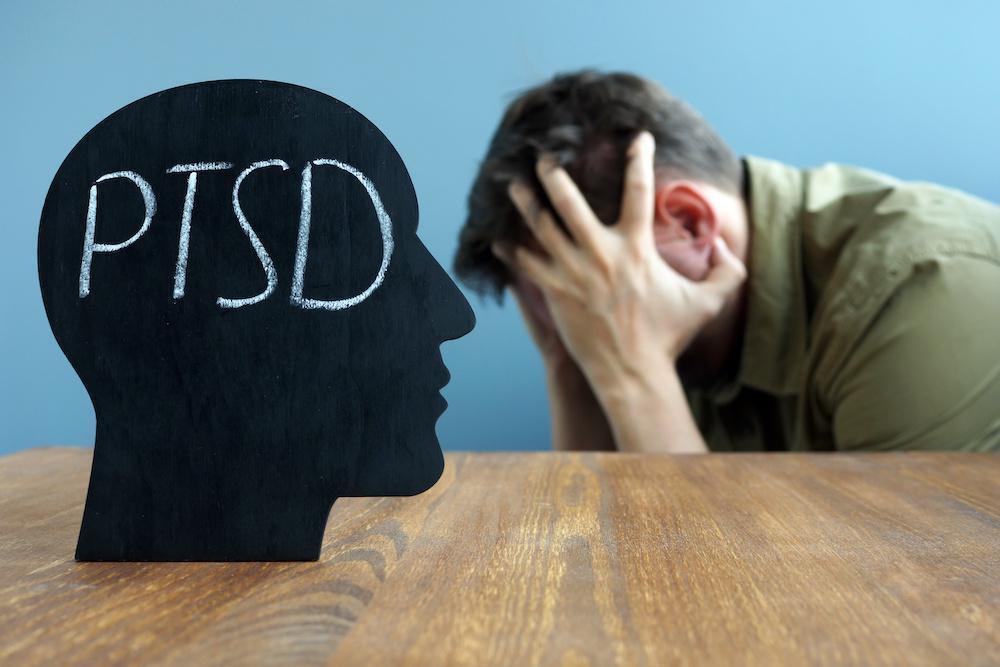Although anyone can suffer from post-traumatic stress disorder (PTSD), it is most commonly linked to mental health problems that arise after a war. This covers those who have been abused, gone through a natural disaster, suffered trauma as a child, or dealt with other extremely stressful situations.
With its vivid flashbacks, nightmares, and frequently crippling anxiety, post-traumatic stress disorder (PTSD) can severely impair a person’s quality of life. Non-pharmaceutical treatments for PTSD include group therapy, individual counseling, and lifestyle modifications like meditation.
For the treatment of their PTSD symptoms, some people are prescribed Paxil, Prozac, or Zoloft. Despite the lack of proof of their effectiveness, nearly a third of veterans also receive prescriptions for addictive sedatives.
Cannabis may be able to help PTSD sufferers in addition to these treatments, as an alternative to prescription medications. Medical marijuana has been used by veterans and other PTSD sufferers to treat their symptoms of anxiety, depression, and insomnia. If you’re considering cannabis as a remedy for your PTSD, reaching out to medical marijuana doctors is a valuable step. They can provide guidance on usage and inform you about the pertinent laws in your state.
Here are five of the greatest cannabis strains for PTSD, based on anecdotal evidence:
- Cannatonic
- OG Kush
- Northern Lights
- Blue Dream
- Harlequin
Best Cannabis Strains for PTSD
Are some “strains” (or, more precisely, cultivars or varieties) better than others at curing PTSD? Maybe, but it’s probably more likely to have to do with the way the plant is ingested and its chemical profile—that is, the amount of terpenes, flavonoids, and cannabinoids it contains—than it is with the strain name.
We would not claim that any of these cannabis strains is inherently superior to another for someone suffering from PTSD. An individual’s success does not guarantee that it will benefit another. Finding the right profile of terpenes, flavonoids, and cannabinoids at the right dosage is usually preferable to being naive. It’s possible that you have multiple preferences for distinct times of the day.
It’s crucial to remember that each person reacts to cannabis differently, so before using medical marijuana for PTSD, you should speak with your doctor. Also, learn about the laws in your state and get an MMJ Card that will provide you legal access to medical marijuana consumption.
Cannatonic
Cannatonic may be the product for you if you’re searching for a high concentration of CBD. Cannatonic contains high levels of cannabidiol (CBD), up to 17 percent. Approximately 6% THC is also present in the CBD-dominant Cannatonic.
The THC:CBD ratio in the finished product and your prior cannabis experience will determine how strong of a high this strain will give you. Following Cannatonic use, some users report feeling calmer and experiencing less anger and anxiety.
OG Kush
OG Kush is a cannabis variety that is frequently mentioned as being beneficial for PTSD. Tetrahydrocannabinol (THC) content in this supposedly calming strain is extremely high—up to 25 percent. Experienced cannabis users favor OG Kush due to its high THC content.
Any strain, especially those high in THC, like OG Kush, should be taken slowly and cautiously if you’re new to cannabis or prone to anxiety. These strains have the potential to have strong psychoactive effects. OG Kush users report experiencing extreme euphoria; however, since the strain can induce dreams, it might be best used in the evening.
Northern Lights
This indica strain might help with sleeplessness, which is a common PTSD symptom. While CBD levels are often insignificant, THC levels can reach up to 20%. Northern Lights, a potent hybrid of Thai and Afghani parents, is well-known for producing the deeply sedative “couch lock” effect. The variety’s myrcene content may be the cause of this.
Northern Lights is thought to be best consumed right before bed and is not recommended for use during the day.
Blue Dream
For good reason, Blue Dream is the most widely used medical marijuana strain. This strain, which is high in THC (18%) and low in CBD (2%) is well-known for its well-balanced effects, which include both uplifting and relaxing feelings.
In addition, Blue Dream has a varied terpene profile that includes limonene, myrcene, beta-pinene, beta-caryophyllene, and humulene, all of which may add to the overall uplifting and relaxing effect. For those experiencing anxiety and depression as PTSD symptoms, this combination may be beneficial.
Many find Blue Dream to be an appealing option due to its sweet yet tart blueberry flavor.
One of the numerous qualifying conditions for legally obtaining medical marijuana with state certification is PTSD. Get in touch with Leafwell’s medical staff to submit an online application for your MMJ card.
Harlequin
Harlequin might be better suited for daytime consumption than Northern Lights. It has also been noted that this high-CBD strain is good for cannabis novices. The fruity mango flavor profile of harlequin is probably caused by the terpene myrcene. Anecdotal evidence suggests that people use cannabis products made by Harlequin to treat chronic pain, anxiety, and depression.
Harlequin is good for people who want a hint of THC without going overboard because it has CBD levels that are comparable to Cannatonic.
Before initiating the use of marijuana for medicinal reasons, it’s recommended to consult your primary care physician. A specialist in medical marijuana can offer insights into state laws, clarify aspects of marijuana usage and dependency. To gain legal access to medical marijuana, acquiring a medical marijuana card San Bernardino may be necessary.





